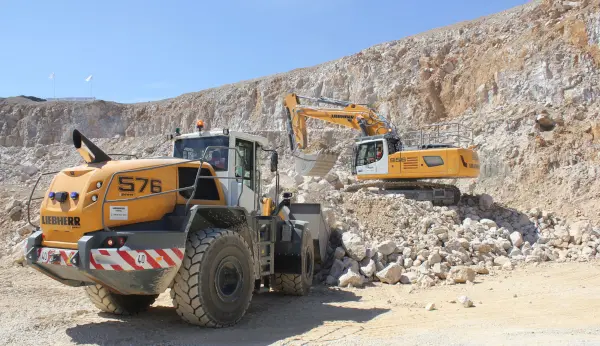Economic aggregates
[img_assist|nid=12636|title=|desc=|link=none|align=right|width=200|height=200]Economics director with the Quarry Products Association (QPA) Jerry McLaughlin kicks off a new regular column simplifying economic indicators for aggregate demand in the UK by taking an assessment of the Chancellor’s Budget and warning readers of the dangers of viewing life through the rosey filter in the lenses of Gordon’s glasses.
If you are in the aggregates business you’d be forgiven for being a little confused. On the one hand the economy appears to be going down the tubes on the other we have the bright sunlit uplands of economic performance described by G Brown esquire.
The truth is not simple to unravel. On 21 March the Chancellor presented his final Budget. He talked about constant economic growth since 1997, further growth forecasts, increasing productivity and job creation, and reeled out lots of supporting data in his defence. And in many respects the economic record is impressive.
As usual he beat the audience into submission with supporting statistics and ratios. But then there was the stuff which wasn’t talked about as much. For example, the high Government share of the economy, high public borrowing levels at a time in the economic cycle when borrowing should be minimal, taxation, and the Bank of England’s inflation concerns leading to rising interest rates.
Overall, looking forward the headline economic numbers are OK. Economic growth will continue at a reasonable rate, some inflationary problems will moderate, and rising public spending will be managed. As in recent years, the world economy will be pretty robust in spite of continuing geopolitical problems while construction prospects look good with 6% increases in orders for new construction work recorded in each of the last two years.
However, even given these indicators aggregate producers need to be cautioned against expecting a big upturn in the coming years. History helps us understand this. It’s always risky using a specific base year for comparison, such as the Chancellor does, as we can’t say whether it was a good or bad one. Instead we should look over the last ten years from 1996-2006, and this helps us build a story.
Over this period the economy expanded by over 30% and construction output by 23%. On the flip side aggregates and ready-mixed concrete markets showed only 5% growth and asphalt sales fell 12%. Meanwhile brick deliveries fell by 18%. The reasons for this are simple.
Construction remains closely linked with the economy but aggregates markets less so. Construction uses relatively less structural materials such as aggregates, concrete, steel and bricks than it used to, relative to the value of construction – £1million spent on a building ten or twenty years ago would have included more of these materials than £1million spent on a similar development today.
Even road budgets now include more non-pavement spending such as IT and information systems. This does not mean that there will not be a continuing demand for substantial volumes of aggregates and associated products – the materials still remain essential – but the link with the measured value of construction will be weaker.
So while weak economic and construction performance would definitely reduce aggregates demand, the converse is less clear. The positive economic and construction trends we expect over the next two to three years may sustain and generate some growth in aggregates markets, but don’t be fooled, it will be no bonanza.
Jerry: 0207 963 8000



